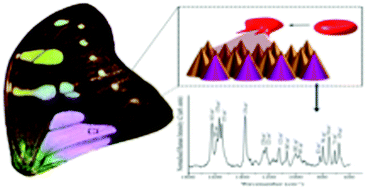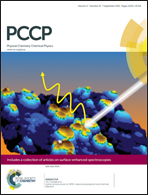Bio-sensing with butterfly wings: naturally occurring nano-structures for SERS-based malaria parasite detection
Abstract
Surface enhanced Raman scattering (SERS) is a powerful tool with great potential to provide improved bio-sensing capabilities. The current ‘gold-standard’ method for diagnosis of malaria involves visual inspection of blood smears using light microscopy, which is time consuming and can prevent early diagnosis of the disease. We present a novel surface-enhanced Raman spectroscopy substrate based on gold-coated butterfly wings, which enabled detection of malarial hemozoin pigment within lysed blood samples containing 0.005% and 0.0005% infected red blood cells.

- This article is part of the themed collection: Surface-enhanced spectroscopies

 Please wait while we load your content...
Please wait while we load your content...